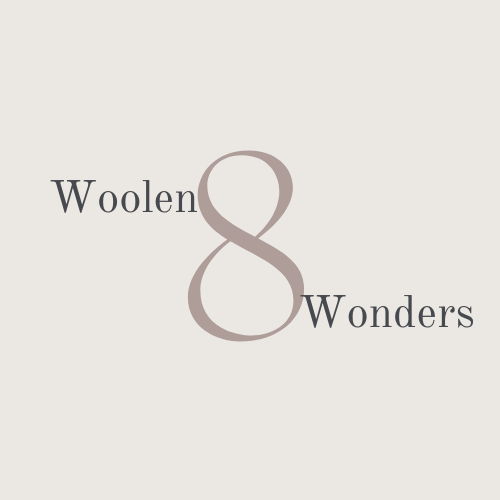Anúncios
Hyperbolic crochet represents a fascinating blend of art and mathematics, where the traditional craft of crochet meets the complex world of hyperbolic geometry. This innovative approach was pioneered by Daina Taimina, who, in seeking a tangible way to represent hyperbolic planes, turned to crochet. Her work not only made these mathematical concepts accessible but also opened up new avenues for artistic expression and educational tools. Hyperbolic crochet for mathematical models serves as a bridge between theoretical mathematics and tangible reality, providing a unique method for visualizing and understanding complex geometric shapes. The significance of hyperbolic crochet extends beyond its initial academic intrigue. It has introduced a novel way to engage with and appreciate mathematics, transforming abstract concepts into hands-on learning experiences. This method of modeling has not only illuminated aspects of hyperbolic geometry but has also found resonance in the broader community, inspiring artists, educators, and environmentalists alike. Through the creation of models that can be touched and observed from all angles, hyperbolic crochet brings an innovative perspective to mathematical visualization and education.
Daina Taimina’s work has garnered international attention, catalyzing a movement that marries mathematics with craft. Her book, Crocheting Adventures with Hyperbolic Planes, details her journey and provides insights into the process, making this intricate connection between crochet and geometry accessible to a wider audience. The book’s reception highlights the growing interest in interdisciplinary approaches to education and art, showcasing how traditional crafts can illuminate complex scientific and mathematical principles. The rise of hyperbolic crochet as a tool for mathematical models underscores the evolving relationship between disciplines that are often seen as disparate. By demonstrating the beauty and complexity of mathematical structures through crochet, Taimina and those she has inspired challenge the conventional boundaries between science and art. This approach not only enhances our understanding of mathematical concepts but also enriches the artistic value of crochet, elevating it to a medium for scientific expression.
History of Hyperbolic Crochet for Mathematical Models
The history of hyperbolic crochet for mathematical models begins with the challenge of visually representing hyperbolic geometry, a task that proved difficult using traditional methods. Before the advent of hyperbolic crochet, mathematicians struggled to create models of hyperbolic planes that could accurately convey their properties. These models were often rigid, limiting the ability to look for the dynamic nature of hyperbolic space. Daina Taimina’s innovative use of crochet in 1997 marked a turning point, offering a flexible and tactile means to model hyperbolic surfaces.
Taimina’s breakthrough provided a novel solution to a longstanding problem, bridging the gap between abstract mathematical theories and physical representation. Her technique involved crocheting in a way that increased the number of stitches exponentially, allowing the fabric to naturally curve and ruffle, thereby mimicking the hyperbolic plane’s continuous expansion. This method was not only effective but also elegant, showcasing the inherent beauty of mathematical structures through the art of crochet.
The evolution of hyperbolic crochet has been marked by a growing community of mathematicians, artists, and educators who have embraced this technique for its versatility and expressive power. Projects such as the Hyperbolic Crochet Coral Reef have exemplified the potential of crochet to bring together diverse groups in the mathematics, art, and environmental awareness. These collaborative efforts highlight the adaptive nature of hyperbolic crochet, capable of engaging a broad audience with its blend of creativity and scientific inquiry.
Anúncios
As hyperbolic crochet for mathematical models gained popularity, it fostered an interdisciplinary dialogue that has enriched both the mathematical and crafting communities. This history reflects a broader trend towards integrating arts and sciences, encouraging a holistic approach to learning and discovery. Through the lens of hyperbolic crochet, we see the potential for traditional crafts to contribute to scientific understanding and innovation, illustrating the interconnectedness of human knowledge and creativity.
Understanding Hyperbolic Geometry Through Crochet
Hyperbolic geometry, with its principles of non-Euclidean space and negative curvature, presents concepts that can be challenging to visualize and comprehend through traditional mathematical approaches. Hyperbolic crochet for mathematical models offers a tangible and intuitive method to grasp these abstract concepts. By employing crochet, a craft familiar to many, hyperbolic geometry becomes accessible to a wider audience, demystifying its complexities through hands-on this. The process of creating hyperbolic crochet models is based on a simple yet effective principle: increasing stitches at a consistent rate. This method results in a fabric that naturally forms into a hyperbolic plane, allowing observers to physically interact with and examine the properties of hyperbolic space. Such interaction is invaluable for educational purposes, providing a direct experience of mathematical concepts that are otherwise abstract and theoretical.
Hyperbolic crochet models serve as a bridge between theoretical mathematics and practical application, offering insights into the behavior of hyperbolic space. For instance, the models demonstrate how, in hyperbolic geometry, lines can appear to curve and diverge, challenging our Euclidean-based intuitions. Through crochet, these and other properties of hyperbolic geometry are not only visualized but made tangible, allowing for a deeper understanding of their implications and applications. The educational potential of hyperbolic crochet for mathematical models is immense, offering a unique approach to learning that engages both the mind and the hands. This method of approach supports a diverse range of learning styles, making mathematics more inclusive and appealing. By connecting abstract concepts to physical objects, hyperbolic crochet fosters a deeper connection to and appreciation for the beauty and complexity of mathematical structures.
Anúncios
The Artistic Side of Hyperbolic Crochet for Mathematical Models
Hyperbolic crochet transcends its mathematical origins, emerging as a medium for artistic expression that draws inspiration from the natural world and beyond. Artists and mathematicians alike have harnessed the potential of hyperbolic crochet to create pieces that are both aesthetically pleasing and mathematically significant. These works challenge the traditional boundaries between disciplines, showcasing the creativity that flourishes at the intersection of art and science.
One of the most notable examples of this artistic feeling is the Hyperbolic Crochet Coral Reef project, which merges environmental activism with mathematical and artistic creativity. This global initiative demonstrates how hyperbolic crochet can mimic the organic forms found in coral reefs, highlighting the connections between natural geometries and mathematical models. Through this project, hyperbolic crochet serves as a powerful metaphor for the fragility of marine ecosystems, illustrating how art and science can unite to raise awareness and inspire action.
Artists like Gabriele Meyer further exemplify the artistic possibilities of hyperbolic crochet, using the technique look into forms found in nature, such as algae and flowers. Meyer’s work, which has been featured in international exhibitions, underscores the versatility of hyperbolic crochet as a tool for the artistic. By blending mathematical precision with creative vision, these artists create pieces that invite viewers to reconsider the relationship between mathematics and the natural world. The artistic side of hyperbolic crochet for mathematical models encourages a broader appreciation for the aesthetics of mathematics. Through the lens of art, mathematical concepts are not only understood but also celebrated for their inherent beauty. This fusion of art and mathematics opens new avenues for research, inviting artists, mathematicians, and the public to engage with mathematical models in innovative and visually compelling ways.
Daina Taimina: The Pioneer of Hyperbolic Crochet
Daina Taimina stands at the forefront of the intersection between mathematics and crochet, having pioneered the use of crochet to model hyperbolic planes. Bornin Latvia, Taimina’s background in both mathematics and the traditional crafts of her homeland uniquely positioned her to make a groundbreaking discovery. Her academic journey, deeply intertwined with her personal passion for crochet, led to the development of a method to model hyperbolic planes using crochet, a technique previously unseen in the mathematical community. This innovation not only provided a practical solution to a complex problem but also opened up a new realm of possibility for the visualization of geometric concepts.
Taimina’s work has been supported and inspired by her late husband, David Henderson, a professor emeritus of mathematics. Together, they did the intersections of geometry and crochet, contributing significantly to both fields. Taimina’s dedication to her craft and her academic pursuits has resulted in a body of work that continues to inspire educators, mathematicians, and artists alike. Her story is a testament to the power of interdisciplinary and the impact of personal passion on academic research.
The recognition of Taimina’s work extends beyond the mathematical community, touching the lives of those in the arts and environmental activism. Her book, Crocheting Adventures with Hyperbolic Planes, has received critical acclaim, including the Euler Book Prize from the Mathematical Association of America. This accolade underscores the unique contribution of her work to the field of mathematics and its accessibility to a general audience, bridging the gap between complex mathematical theories and the tangible, creative expression of crochet.
Taimina’s legacy is one of innovation, creativity, and the breaking down of barriers between disciplines. Her work exemplifies how traditional crafts can illuminate and expand our understanding of mathematical concepts, encouraging a broader appreciation for the beauty and complexity of the mathematical world. As Taimina continues her creative journey, her contributions to both mathematics and crochet serve as a lasting inspiration, demonstrating the rich possibilities that emerge at the convergence of art and science.
Hyperbolic Crochet Techniques and Patterns
Hyperbolic crochet for mathematical models utilizes a simple, yet profound technique: the systematic increase of stitches in a crochet pattern. This method creates a ruffled, expanding surface that accurately represents the hyperbolic plane. For beginners, starting with hyperbolic crochet involves learning basic crochet stitches and then applying the principle of increasing stitches at regular intervals. This foundational approach allows anyone with a basic understanding of crochet to begin experimenting with mathematical models.
The beauty of hyperbolic crochet lies in its adaptability. Patterns can range from simple models, perfect for educational purposes, to complex artistic creations that capture the imagination. Resources for hyperbolic crochet patterns are increasingly available, offering step-by-step instructions for those eager to delve into this intersection of math and craft. These patterns not only guide crafters through the creation of hyperbolic planes but also inspire innovation and personal expression within the framework of mathematical accuracy.
Advanced hyperbolic crochet techniques varying rates of increase and the integration of different stitches to model more complex geometric concepts. These advanced models can simulate a wide array of hyperbolic phenomena, providing a deeper understanding of the geometry’s properties and applications. For those looking to push the boundaries of hyperbolic crochet, experimenting with different materials, colors, and crochet hooks can yield stunning results that are both mathematically significant and visually captivating. The availability of tutorials, online communities, and workshops has made hyperbolic crochet more accessible than ever. Enthusiasts can share their creations, exchange tips, and collaborate on projects, fostering a vibrant community of crafters and mathematicians. This collective of hyperbolic crochet techniques and patterns enriches the field, contributing to both its artistic depth and its educational value.
Hyperbolic Crochet in Education
Hyperbolic crochet for mathematical models offers an innovative approach to education, making abstract mathematical concepts tangible and engaging. By incorporating hyperbolic crochet into the curriculum, educators can provide students with a hands-on learning experience that enhances understanding and retention of geometric principles. This tactile approach to learning caters to diverse learning styles, allowing students to physically manipulate models and directly observe the properties of hyperbolic geometry. The use of hyperbolic crochet in classrooms around the world has demonstrated its effectiveness as a teaching tool. Students not only grasp mathematical concepts more fully but also develop an appreciation for the beauty and complexity of mathematics. Through the creation of their own crochet models, students engage in a creative process that reinforces their learning and fosters a deeper connection to the subject matter.
Hyperbolic crochet also encourages interdisciplinary learning, bridging the gap between mathematics and arts education. By highlighting the artistic aspects of mathematical models, educators can inspire creativity and curiosity in their students, challenging the traditional separation of artistic and scientific disciplines. This integration of art and science enriches the educational experience, providing students with a more holistic understanding of the world. The potential of hyperbolic crochet to transform educational practices is immense. As more educators adopt this approach, the benefits of hands-on, creative learning become increasingly apparent. Hyperbolic crochet not only enhances the teaching of mathematics but also promotes a broader appreciation for the interconnectedness of knowledge, encouraging students to discover the world through a multidisciplinary lens.
Mathematical Concepts Through Hyperbolic Crochet
Hyperbolic crochet provides a unique platform for a wide range of mathematical concepts, from the basic principles of geometry to more complex theories. Through the creation of hyperbolic models, individuals can visually and tactilely engage with concepts such as curvature, topology, and the properties of non-Euclidean spaces. This hands-on approach demystifies abstract mathematical ideas, making them more accessible and understandable. One of the key benefits of hyperbolic crochet is its ability to illustrate the concept of exponential growth, a fundamental principle in hyperbolic geometry. As crocheters work through a pattern, the increasing number of stitches in each row physically represents this growth, offering a clear and tangible example of how hyperbolic space expands. This visual and tactile representation aids in the comprehension of mathematical concepts thatare often challenging to grasp through traditional educational methods.
Furthermore, hyperbolic crochet for mathematical models facilitates the properties of geometric shapes and their relationships to each other within hyperbolic space. For example, by altering the rate of increase in a crochet pattern, one can model different hyperbolic surfaces, each with its own curvature and characteristics. This hands-on geometric properties encourages a deeper understanding of the subject matter and fosters an intuitive grasp of complex mathematical relationships. In addition to its educational value, hyperbolic crochet also offers a medium fo the intersection of mathematics and art. The process of creating a hyperbolic model is itself an exercise in creative problem-solving, where mathematical precision meets artistic expression. This blend of disciplines not only enhances the appeal of mathematics but also highlights the inherent creativity of mathematical thinking.
The mathematical concepts through hyperbolic crochet represents a significant departure from traditional methods of mathematical education, offering a more engaging and interactive approach. By providing a tangible connection to abstract mathematical theories, hyperbolic crochet for mathematical models opens up new avenues for understanding and appreciating the beauty and complexity of mathematics.
Hyperbolic Crochet as a Community Building Tool
The rise of hyperbolic crochet for mathematical models has fostered a vibrant community of enthusiasts, spanning mathematicians, crafters, educators, and artists. This diverse group comes together through workshops, online forums, and collaborative projects, creating a supportive network for sharing knowledge, techniques, and inspiration. The communal aspect of hyperbolic crochet encourages the exchange of ideas and fosters a sense of belonging among individuals with shared interests.
Global projects such as the Hyperbolic Crochet Coral Reef have demonstrated the potential of hyperbolic crochet to unite people across geographical boundaries in pursuit of common goals. These collaborative efforts not only contribute to the scientific and artistic hyperbolic geometry but also raise awareness about environmental issues and promote social engagement. The community-building aspect of hyperbolic crochet for mathematical models showcases the craft’s ability to inspire collective action and foster meaningful connections among participants.
Online communities play a important role in the dissemination of hyperbolic crochet techniques and patterns, offering a platform for enthusiasts to share their creations, seek advice, and collaborate on projects. These digital forums provide a space for learning and innovation, where beginners can find guidance and experts can expect new challenges. The supportive atmosphere of these communities encourages participation and experimentation, contributing to the ongoing development of hyperbolic crochet as a field.
Workshops and exhibitions offer another avenue for community engagement, providing opportunities for hands-on learning and public display of hyperbolic crochet models. These events not only promote the educational and artistic aspects of hyperbolic crochet but also highlight its potential to bring people together around shared interests. By participating in these gatherings, individuals can experience the joy of collective creativity and the satisfaction of contributing to a larger community project. The community aspect of hyperbolic crochet for mathematical models underscores the craft’s ability to bridge divides and connect individuals from diverse backgrounds. Through the shared language of mathematics and art, hyperbolic crochet fosters a sense of unity and collaboration, illustrating the power of traditional crafts to inspire, educate, and bring people together.
Future Directions for Hyperbolic Crochet in Mathematics and Art
The intersection of hyperbolic crochet with mathematics and art has opened up a realm of possibilities for the future. As the field continues to evolve, it promises to uncover new applications for hyperbolic models in scientific research, education, and artistic expression. The adaptability and accessibility of hyperbolic crochet make it a fertile ground for innovation, inviting mathematicians, artists, and educators to push the boundaries of what can be achieved. One exciting direction for hyperbolic crochet lies in its potential to visualize complex scientific phenomena beyond hyperbolic geometry. Researchers are beginning for the use of crochet models to represent structures in fields such as biology, chemistry, and physics. This expansion could facilitate a deeper understanding of natural patterns and processes, bridging the gap between abstract scientific concepts and tangible models.
In education, hyperbolic crochet is poised to play an increasingly significant role as an interactive teaching tool. By incorporating crochet models into STEM curricula, educators can engage students in a hands-on mathematical and scientific principles. This approach not only enhances learning outcomes but also promotes creativity and problem-solving skills among students, preparing them for future challenges in a rapidly changing world. The artistic potential of hyperbolic crochet is also boundless, with artists continuously look for new ways to integrate mathematical models into their work. Future collaborations between mathematicians and artists could lead to innovative exhibitions and installations that challenge our perceptions of space and form. These artistic endeavors not only celebrate the beauty of mathematics but also highlight the creative potential inherent in scientific research.
As we look to the future, the possibilities for hyperbolic crochet in mathematics and art are limited only by our imagination. This unique intersection of disciplines encourages a holistic approach, where creativity and scientific inquiry go hand in hand. By continuing to push the boundaries of what is possible, the community of hyperbolic crochet enthusiasts can contribute to a richer understanding of the world around us, fostering a culture of curiosity, innovation, and collaboration.
The Universal Appeal of Hyperbolic Crochet for Mathematical Models
Hyperbolic crochet for mathematical models represents a remarkable convergence of mathematics, art, and education. Through the simple act of crocheting, complex geometrical concepts are rendered tangible and accessible, bridging the gap between abstract mathematical theories and the physical world. The universal appeal of hyperbolic crochet lies in its ability to engage a diverse audience, from seasoned mathematicians to curious crafters, in the hyperbolic geometry. The legacy of Daina Taimina’s pioneering work continues to inspire a growing community of enthusiasts who seek the mathematical, artistic, and educational potential of hyperbolic crochet. This vibrant community not only advances our understanding of hyperbolic geometry but also fosters a deeper appreciation for the interconnectedness of all forms of knowledge.
Hyperbolic crochet for mathematical models encourages us to reconsider the boundaries between disciplines, highlighting the creativity inherent in scientific inquiry and the precision required in artistic expression. As this field continues to evolve, it promises to uncover new insights into the nature of our universe and the patterns that define it, challenging us to see the world through a different lens. In conclusion, hyperbolic crochet for mathematical models embodies the spirit and discovery. By uniting mathematics, art, and education in a single thread, it offers a powerful testament to human creativity and our endless quest for understanding. As we continue to weave together the threads of knowledge, hyperbolic crochet stands as a symbol of the beauty and complexity of the world around us, inviting us all to join in the journey of discovery.
The Practical Benefits of Fringe Detail in Everyday Accessories
Fringe detailing in accessories isn’t just an artistic expression; it serves practical purposes that enhance the usability and longevity of items ranging from bags and scarves to jewelry and home decor. This section examines the multifaceted benefits of incorporating fringe into everyday accessories, highlighting its functionality beyond aesthetic appeal.
Fringe details on accessories often extend the life of these items by acting as a buffer that absorbs wear and tear more effectively than the main material. For instance, on a heavily used tote bag, fringe can minimize abrasion on the main fabric by taking the brunt of the impact during regular use. This distribution of physical stress helps preserve the structural integrity of the accessory, maintaining its shape and appearance over longer periods.
Additionally, fringe has a unique ability to disguise minor damages or stains that might otherwise be conspicuous on plain fabrics. This characteristic is particularly valuable for items like scarves and throws that are frequently exposed to various environments and are susceptible to quick wear. The textured layers of fringe can conceal small imperfections, allowing the item to maintain an impeccable look with less frequent cleaning or maintenance.
Fringe also enhances the functionality of accessories by improving grip and handling. For example, the added texture on the handle of a purse or the edge of a book cover can provide a better grasp, reducing the likelihood of slipping and dropping. This is especially beneficial in products designed for daily use where ease of handling can significantly influence user satisfaction.
In colder climates, accessories with fringe details such as shawls and blankets offer additional warmth and insulation. The layers of fringe create pockets of air that trap heat, providing a cozy, snug environment against the chill. This thermal property is not only functional but also increases the product’s value as a versatile, all-season item.
Beyond these practical applications, fringe details can be strategically used to enhance the ergonomic design of accessories. For instance, in wearable items like belts or headbands, fringe can be aligned in a manner that conforms better to the body’s contours, offering increased comfort without compromising style. This ergonomic integration makes the accessory more adaptable to different body types and movements, ensuring a better fit and freedom of movement.
Finally, the inclusion of fringe can transform a simple accessory into a multipurpose tool. A fringed leather bookmark, for instance, can double as a makeshift ruler due to the uniform lengths of the fringe, while a fringed scarf might be used as an impromptu bag with just a few knots. These additional uses not only extend the utility of the accessory but also encourage creative solutions in everyday situations.
By incorporating fringe details into accessories, designers and craftsmen not only add a layer of aesthetic richness but also significantly enhance the practical value of these items. The durability, concealment of wear, improved grip, insulation, ergonomic benefits, and multipurpose nature of fringed accessories make them a smart choice for consumers looking for both style and functionality in their daily essentials. This combination of utility and aesthetics ensures that fringe details remain a relevant and cherished element in the world of accessory design.
See More At: woolen8wonders.com



